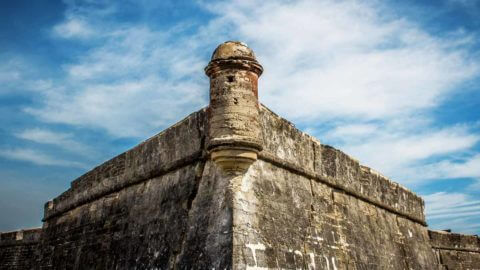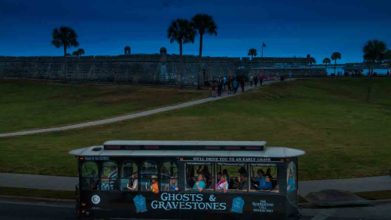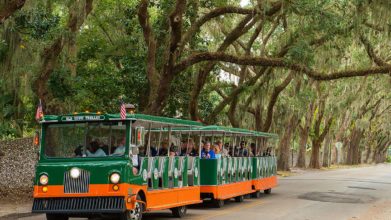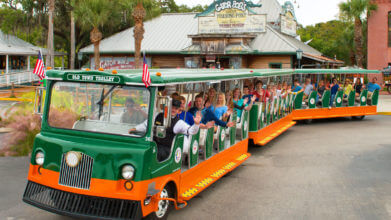The Castle is Begun

The story of the fortifications built along the southeast east coast of what is now the United States begins in the mid-16h century with the European explorations of the northern hemisphere. Castillo de San Marcos in St. Augustine survives to tell the story of the battle for trade domination, power and wealth.
After Ponce de Leon claimed La Florida for Spain during his first expedition in 1513, Spain’s focus instead turned southward to the riches it was extracting from Central and South America. As heavily laden galleons returned to Spain via the Gulf Stream, hugging the east coast of Florida and up to the Carolinas, the Spanish fleets needed provisions, shelter from storms, and refuge from seafaring privateers commissioned by European countries.
As the English began their claim to the lands of New World by establishing settlements along the eastern seaboard of North America, Spain feared losing its foothold along the east coast trade route, and with it, her maritime dominance. Spain began occupying the territory along the trade route bordering the Gulf Stream trade route. La Florida was of particular concern. With this objective in mind, under the command of Pedro Menéndez de Avilés, the first fortified settlement was established in 1565. It was called San Agustín.
A small book, titled “The History of Castillo de San Marcos & Fort Matanzas: From Contemporary Narrative & Letters,” edited by Albert C. Manucy, and published as a Department of Interior reprint in 1945, gives a vivid description of the construction of Castillo de San Marcos. Much of the copy was extracted from literal translations of original Spanish documents. The Introduction sets the stage:
“On Sunday afternoon in 1672 when the officials and townspeople of St. Augustine gathered in the shadow of the clumsy wooden fort – the last in the succession of wooden forts since Menéndez’ time – a new era was in sight. Here was to be built a citadel whence all Florida could be protected – a mighty fort to check the English advance. For many months the limekilns had been roaring, converting oyster shells into lime, and the quarry workers chopped incessantly in the coquina pits, cutting out the shell rock for the new stone fort.”
Below are excerpts from the translation of an original Spanish document attesting to the ground-breaking:
“I, Juan Moreno y Segobia, notary public for the government of this city and presidio of San Agustín of Florida, do testify and [give] true testimony whereto may agree the gentlemen who might see these presents:
That today, Sunday, about four o’clock in the afternoon, the year of one thousand six hundred and seventy two; being next to the fort of this presidio where the site of the new fort is marked, which by order of his majesty is to be built of stone, the senor sergeant major don Manual de Sendoya, a governor and captain general of these provinces for his majesty, in his royal name, accompanied by the judges, royal officials, sergeant major don Nicolás Ponce de Leon and captain Antonio de Argüelles of this presidio, who are offices of his majesty, and many other persons and retired military officers of the presidio; [the said governor} with a spade in his hands and the other persons and royal officers present, began this said day to dig the foundation trenches to commence the building of said castle….”





